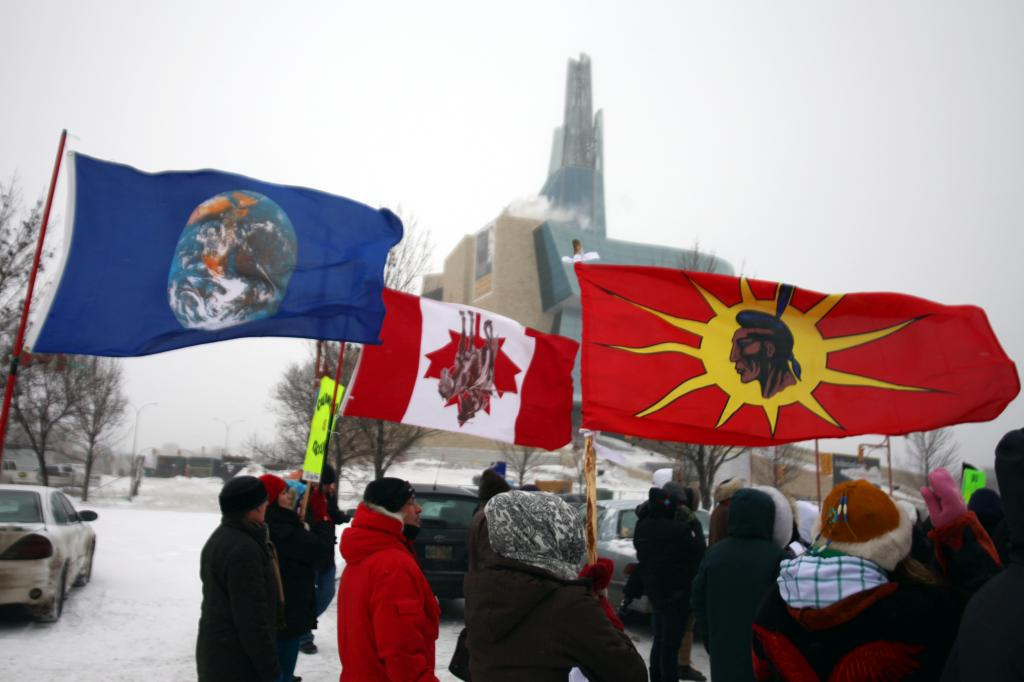As the brainchild of the late Izzy Asper — his photo appears on the home page of its website — the newly opened Canadian Museum for Human Rights was always bound to be controversial. I was friendly with Izzy and liked him a lot, but I was always concerned that some of his passionately held views didn’t at all fit with a passion for human rights, a contradiction he never recognized.
But to be fair, with or without Izzy, controversy was built in to the Museum’s very raison d’être, and I don’t envy some of the small-p political choices its officials had to make (I am told I appear in the section on the Rwanda genocide). The institution bit off a huge chunk of territory, much of it inherently sensitive, antagonizing vested interests, and inevitably leaving disappointed parties in its wake.
But what was far from inevitable was the Museum going out of its way to make trouble for itself, or at least the “Friends of the Museum” making trouble for it. (Each time I called the Museum for information this week, someone from Friends got back to me. They seemed interchangeable.) Yet that’s what happened on September 20 when Friends placed full-page ads in seven Canadian dailies announcing the Museum’s official opening and adding in bold: “Thank you to the Government of Canada and the Rt. Hon. Stephen Harper for creating Canada’s fifth national museum.” Below, less boldly, it went on to thank the province of Manitoba (premier unnamed), the City of Winnipeg (mayor unnamed) and the private donors who made the museum possible.
I’m pretty certain that those behind these ads did not recognize how problematic it really was. But this was a serious failure on their part. No doubt the ads pleased Stephen Harper and his supporters. But what about those many Canadians who think that instead of thanking him, the government of the Rt. Hon. Stephen Harper deserves a display of its own in the museum laying out its multiple abuses of human rights?
By coincidence, just as the ad appeared, media were reporting on a newly released document revealing that “the government has been keeping tabs on more than 600 protests, rallies and events across Canada between 2006 and 2014. A large portion of the peaceful gatherings were held by First Nations — others by environmental and social activists protesting fracking, Keystone XL, and human rights abuses.” So let’s see here: a government that spies on Canadians protesting its human rights abuses gets lauded by the Friends of the Canadian Museum for Human Rights. With Friends like these…
Can the Museum’s officials be unaware of this record? It’s hardly a state secret. It’s been thoroughly documented by, among others, the Council of Canadians, Amnesty International Canada, Democracy Watch, lawyers’ groups, doctors’ groups, scientists’ groups, refugee advocates, rabble.ca, the Tyee, and Voices-Voix, which was founded by citizens precisely troubled by the government’s disdain for human rights and democratic processes. None of these groups have criticized the Harper government for ideological reasons. They’ve simply followed the evidence, and there’s a frightening amount.
Just check out the very categories through which Voices-Voix.ca analyzes the government’s activities: Silencing Knowledge, Silencing Individuals, Silencing Civil Society, Silencing the Public Service. The website documents more than 80 cases of individuals, organizations and public service institutions that have been muzzled, defunded, shut down or vilified by the government. There are certainly many more.
Can the Museum’s Friends also have missed the dire warnings of the mainstream media? I reported on a few of them in this space recently. From columnists Andrew Coyne and Jeffrey Simpson, from Globe and Mail editorials, we find phrases like “new abuse of power by the Harper government,” “sweeping powers that is common in dictatorships,” “impugned the integrity of…the Chief Justice of the Supreme Court.” Just this week in the Globe, Lawrence Martin wrote ominously that Canada has “a government where freedom of speech has become a stranger” and historian Erna Paris pleaded that the government “needs to return human rights to Canadian refugee policy”.
When all this material is pulled together, its very magnitude is really quite shocking. It reveals an indisputable pattern of Stephen Harper’s government silencing people, narrowing the democratic space for advocacy and dissent, and trampling on rights. Not since Pierre Trudeau invoked the War Measures Act almost half a century ago and detained some 500 innocent Canadians has a government so violated the human rights of so many. What might it do if re-elected yet again?
If you were a friend (or Friend) of human rights, would you applaud those responsible for this record, or would you expose it? Does the Museum care mostly about the crimes of the past, or does it intend to be a living institution — the Canadian Museum FOR Human Rights?
This article originally appeared in The Globe and Mail.
Image: Flickr/slm



